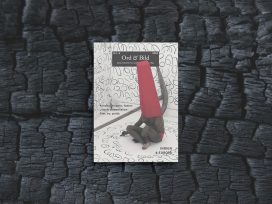Kenan Malik’s article, “Mistaken identity”, belongs to those critiques of the theory of multiculturalism that target either the way it functions or the categories with which it operates. The title of Malik’s essay reveals an interest in false conclusions in thinking about multiculturalism. Malik accuses the multiculturalist theoretical discourse of biologization, in that it presupposes that culture, difference and identity are inborn traits. Such an approach, Malik argues, comes dangerously close to racist theory and, in fact, is almost indistinguishable from it. This thesis is certainly provocative; yet for it to be convincing, it must itself avoid false conclusions.
I intend to start out by briefly tracing the false conclusions within Malik’s line of argument; I will then demonstrate a central problem of the multiculturalist paradigm of thought, although my own criticism points in another direction from that of Malik.
Critique of multiculturalism
Charging multiculturalism with conceiving difference, identity and culture as something “finished” or “complete” is probably the most distinctive thread within theoretical critique of multiculturalism. In general, two directions are distinguishable within this critique: the functional and the categorical.
Functional critiques accuse multiculturalism of failing to function in a socially beneficial manner, and that it dashes the expectations it raises. Critics often come from the social sector and point out that the “co-existence of cultures” touted by multiculturalism is dysfunctional and leads to a variety of problems including disintegration and stigmatization. A prime example is the position taken by German Islam critic and women’s rights activist Seyran Ates, who blames multiculturalism for the development of parallel societies and who has reaped much applause from conservative thinkers with theses such as “The multiculti approach is naïve”.
The categorial critique, on the other hand, usually comes from theory. It scrutinizes conceptualities of culture, identity and difference prevalent within discourses on multiculturalism; in other words, it calls into question the conceptual building blocks of multiculturalism. First and foremost, the categorial critique criticizes multiculturalism’s “essentialization” of culture, origin and religion. Multiculturalism, it argues, strips these categories of their process-like and open character, understanding them merely as “finished objects […] something one has and is a member of, rather than something one makes and reshapes through constant renewing activity”. Kenan Malik endorses this critique of essentialism.
By now there is a long, critical tradition of accusing multiculturalism – or at least one of its varieties – of an essentializing application of basic concepts like culture, identity and difference. However, with a provocative reinterpretation of multiculturalism, it is still possible to stand out from this critical tradition and cause a bit of a sensation. Kenan Malik accuses multiculturalism not only of essentialization, but even of biologizing “difference” – which is really just a sub-category of essentialization. This biologization, claims Malik, links multiculturalism with racism.
But in order to test the accuracy of Malik’s affirmative answer to the question of whether “multiculturalism [is] a form of racism”, one must review his line of argumentation.
One aspect of his methodology that stands out immediately is its relatively sparse reference to texts and contexts of multiculturalist thinking. Those representatives of the theory of multiculturalism whom Malik cites – including Iris Young, Charles Taylor and Will Kymlicka – have indeed been influential in debates about multiculturalism over the last twenty years. In constructing his argument, Malik cites formulations that, though pointed, are in no way representative of the extensive work of these authors. Neither can the few suggestively chosen references be called representative of the multiculturalism discourse as a whole. To draw a generalized conclusion about multiculturalism – in all its contradictory interpretations and multi-disciplinary theoretical currents – from a few isolated and possibly misunderstood theses can only be considered carelessness. False conclusions are the result.
The existence and character of culture
Malik’s false conclusion begins where he thinks he has grasped the position of multiculturalism along the lines of Will Kymlicka and Charles Taylor:
The relationship between cultural identity and racial difference becomes even clearer if we look at the argument that cultures must be protected and preserved. The political philosopher Will Kymlicka argues that since cultures are essential to people’s lives, where ‘the survival of a culture is not guaranteed, and, where it is threatened with debasement or decay, we must act to protect it’. For Charles Taylor, once ‘we’re concerned with identity’, nothing ‘is more legitimate than one’s aspiration that it is never lost.’ But what does it mean for a culture to decay? Or for an identity to be lost?
The error in reasoning, according to Malik, occurs with multiculturalists like Charles Taylor or Will Kymlicka when they consider this loss of culture to be a concrete possibility and call for the protection of cultural identity which otherwise could be lost. First of all, Malik argues, one can perceive the objectification of identity in the very suggestion that identity can be lost. But not only “things” can be lost – consider, for example, belief, trust, consciousness or competence. Moreover, it is quite false to say that every “thing” that can be lost is a product of “nature”.
The multiculturalist concept of loss and demand for protection, Malik continues, creates an objectification of culture by driving a wedge between the existence of culture and culture as lived practice. This conjures up a dichotomy which, in metaphysics, forms the opposition between substance and attribute, and whose “concept of ‘type’ […] was at the heart of nineteenth-century racial science”. Malik then asks about the basis for this demand for preservation: if a culture is no longer capable of survival in its “character”, if it is unable to pass the test of survival within the free play of cultural forces, why should one keep it alive by artificial means?
As Malik sees it, the multiculturalists’ demand for protection of culture is based on the normative emphasis on culture’s existence, an emphasis that objectifies culture; and the objectification of culture, identity and difference amounts to biologization. Malik reasons: “Kymlicka draws a distinction between the ‘existence of a culture’ and its ‘character at any given moment’. […] By ‘character’ Kymlicka seems to mean the actuality of a culture. [Yet] If a culture is not defined by what its members are doing, what does define it? The only answer can be that it is defined by what its members should be doing. And what you should be doing, for cultural preservationists, is what your ancestors were doing. Culture here has become defined by biological descent. And biological descent is a polite way of saying ‘race'”.
If these two elements – the existence of culture and culture as lived experience (its “character”) – are conceived of as separate and juxtaposed to one another, as Malik infers from the cited passages, then culture, identity and difference are treated as a kind of biological inheritance whose sheer existence requires that they be preserved at all costs. This is where Malik’s argumentation takes the decisive leap from the essentialization of cultural identity to its biologization. This leap is used to support the concluding thesis that multiculturalist thinking is directly linked to racist thinking, which, in order to keep separate that which should not be mixed, also biologizes and seeks to preserve social characteristics. This is exactly where the trap of false conclusion snaps shut, however.
Malik locates the moment of the biologization of culture in the gap between the existence and the character of culture, in other words the multiculturalist understanding of culture as what it should be, namely that which it has always been. Culture as something that has always been is thus tantamount to the very transmission that mandates its continuation, whether or not it is currently viable and relevant. Malik thus sees the biologizing objectification of culture in multiculturalist thought in the fact that culture exists as transmission, or owes much of its existence to transmission. For Malik, this transmission is nothing other than “biological ancestry”, a quasi-natural entity that generates the mission to preserve and protect culture and identity.
Normally one would ignore this kind of error were it not for the fact that Malik builds his conclusion upon the notion that multiculturalism and racism are two sides of the same coin. It is an error to explain the transmission of culture and identity as a biological fact. Of course, there are biological factors involved in cultural transmission; but they do not have the significance that Malik ascribes to “biological descent” when he calls it the most influential mechanism of cultural transmission. The transmission that obliges continuation, that can be lost and that can also require protection under threatening conditions, is not a biological fact but rather an intellectual one. And as such it is not concrete, like a product of nature, but rather is dependent upon conscious continuation – precisely because it can be lost.
If, on the other hand, one refuses to see transmission as a crucial factor in cultural identity, and wishes instead to judge the viability of and justification for cultural identity solely on the basis of its current situation in the free play of cultural forces, is one not then tacitly invoking the law of survival of the fittest, as it exists in nature? According to this reasoning, one would, for example, consent to the eradication of the historical complexity of modern cities and instead allow the contingent of needs of functionality and profitability to govern.
All this raises the question of whether the author is not projecting his own biologizing view of culture onto multiculturalist philosophy, and benefiting from this projection. The sole biologizing moment in Malik’s critique of the biologization of cultural identity in multicultural thought, which in turn provides the evidence for the latter’s belonging to a legacy of racist thought, is the critique itself.
Critique of essentialization and holism
On the other hand, the warning contained in Malik’s critique appears to be thoroughly justified – that the theory of multiculturalism can slide into an essentialist understanding of identity and difference. However this slippery slope does not consist in the biologizing of cultural identity; rather, the problem of multiculturalism is that it deals with a very narrow and limited spectrum of differences. Nowadays, critique of the essentialization of identity and difference in the context of multiculturalist theory and practice is considered state of the art in various disciplines, and has itself become an unquestioned intellectual habit. This critical stance regarding various essentialist interpretations of culture suggests that culture can be seen as more than a mere isolated entity. However it does not ask why the phenomenon of societal diversity, and particularly diversity pertinent to individual belonging and societal cohesion, is linked only to identifiers like culture, origin, religion, language and nationality, nor whether such descriptions are adequate at all.
In the theory and practice of multiculturalism, identity complexes such as culture, origin and religion function under the assumption that they alone are important for societal cohesion and societal belonging. These identity systems have in common the claim to holism; they are narratively coherent and normatively grounded, providing both individual and collective orientation and meaning. In addition, within the discourse of multiculturalism, the term “culture” is often treated as a substitute for other, just as holistically composed identifiers. Professionals especially – politicians, experts, activists – tend to generalizations and idealizations, which are essential to the formulation of holistically conceived markers of difference. The reference to such identity holisms makes the politics of integration seem more comprehensible, more practicable, and easier to steer.
At the same time, identifiers like culture, origin or religion are seen as raised above the daily struggles for cohesion and belonging; hence, they gradually lose their descriptive and explanatory relevance. Increasingly, conflicts over belonging, struggles for recognition, or explicit markers of difference are defined by free-floating fragments of holistic identity complexes; these include language (as a means for understanding, not as a cultural narrative), religion (dress code, diet) and social needs such as qualification or work-life balance. Atmospheric differences such as skin colour, accent, name, and so on, replace the holistic grand divides. Inventories that reduce social diversity to a few holistic identifiers discount such developments.
In theory and in practice, attention is increasingly focused on those sets of distinguishing traits that extend the phenomenal realm of multiculturality. Low-level, ordinary markers of difference, which do not stem from holistic narratives and normative justifications, appear equally important as identity holisms in triggering confrontations over social cohesion and belonging. If one considers the integration policies of most European countries, one observes that they are first and foremost concerned with erasing inequalities related to social needs. Integration programmes – which often are rhetorically likened to contract between the host society and the immigrant – are first and foremost concerned with the promotion of language acquisition. Here, language is treated as an instrument of social communication, in other words as marker of a social need.
Fragmented, hybrid and atmospheric identities
An example of the treatment of low-level and fragmented identity traits as relevant for the recognition and solution of problems of cohesion and belonging in liberal-democratic host societies in the West can be seen in the politics of diversity. This approach emerged in the 1980s as a result of affirmative action in the USA and originally found expression in the business sector. In the practice of diversity politics, and then in various theoretical disciplines (social anthropology, sociology, political science, social philosophy), a new social-diagnostic awareness gained (institutional) currency that labelled the processes, events and conditions of societal plurality and heterogeneity as “diversity.” However this institutionalized, diagnostic awareness was oriented toward other markers of difference than those that make up institutionalized multiculturality and that dominate public debate. At the centre of business-based diversity politics are, for example, social needs such as compatibility of work and family life. From the political perspective, indicators of the hybridity of identification are increasingly being taken into account when considering diversity, especially insofar as these are characteristic of youth culture in a juvenilized society. In addition, phenomena of hybridized social identifications exist that extend beyond youth culture, confronting politics and administration with the “super-diversity” resulting from ongoing immigration.
Not least, social-diagnostic awareness also has increased sensitivity to atmospheric markers of otherness that are relevant to cohesion and inclusion. But these markers are just as unlikely to display a holistic perimeter, narrative coherence or normative grounding as are free-floating identity fragments or differences in needs. Visual or audible traits such accent, name or skin colour, which prove decisive for belonging and non-belonging at the everyday level, often torpedo the fulfilment of the normative principles of western liberal democracies in ways that evade existing methodological approaches.
All these low-level differences between groups – social needs, free-floating identity fragments, hybrid and atmospheric identity traits – are coming ever more under the scrutiny of social-diagnostic diversity awareness. The assumption is that they, too, can destroy social cohesion and that they, too, define the non-belonging that collides with liberal democratic principles of autonomy, equality and inclusivity.






